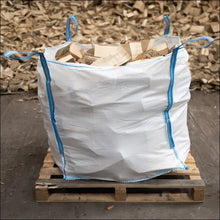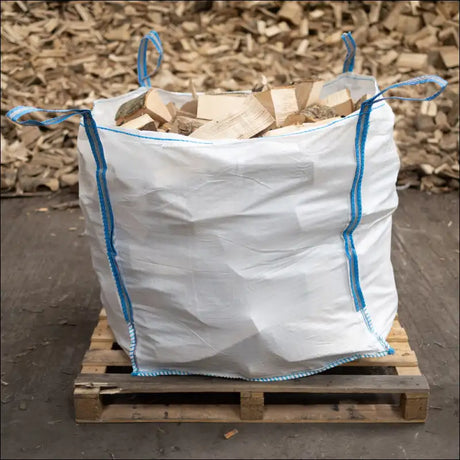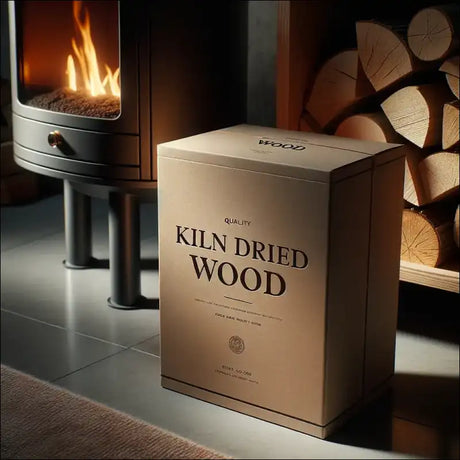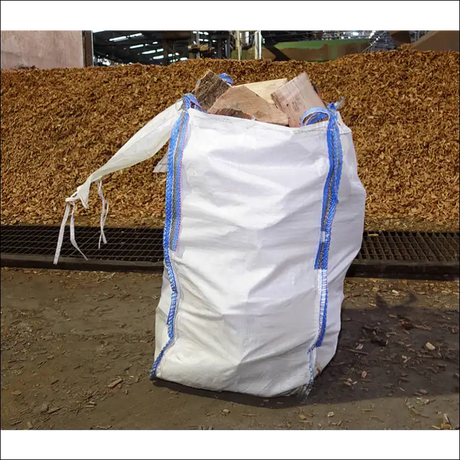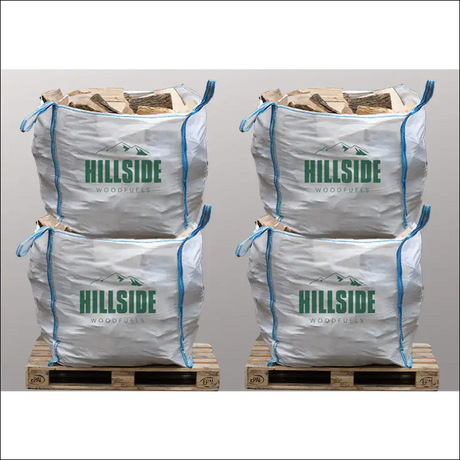In these times of rising energy costs, the allure of free firewood can be tempting for many UK households. After all, who doesn't love a bargain, especially when it comes to keeping our homes warm and cozy? But before you jump at the chance to collect that pile of logs from the side of the road or scour your local area for free wood, it's essential to understand the true cost of "free" firewood. Let's dive into this burning question and uncover the hidden expenses and potential risks associated with sourcing free firewood.
Where Can I Get Free Firewood in the UK?
Before we delve into the costs, let's explore some common sources of free firewood that people often consider:
- Local tree surgeons and arborists
- Construction sites and building projects
- Fallen trees after storms
- Community Facebook groups or Freecycle networks
- Nearby woodlands (with proper permissions)
- Pallets and wooden crates from businesses
While these sources might seem like a goldmine for budget-conscious homeowners, it's crucial to approach them with caution. Let's examine why "free" firewood might not be as cost-effective as you think.
The Hidden Costs of Free Firewood
1. Time and Effort
One of the most significant hidden costs of free firewood is the time and effort required to source, collect, and prepare it. Consider these factors:
-
Sourcing: Searching for reliable sources of free firewood can be time-consuming. You might spend hours scouring online forums, driving around looking for fallen trees, or networking with local businesses.
-
Collection: Once you've found a source, you'll need to transport the wood. This often involves multiple trips, heavy lifting, and potentially renting a vehicle if you don't own one suitable for hauling logs.
-
Processing: Free firewood rarely comes ready to burn. You'll likely need to invest time in:
- Cutting logs to size
- Splitting larger pieces
- Stacking and storing the wood properly
Remember, time is valuable. The hours spent on these activities could be used for work, family, or leisure. Is the "free" wood worth the trade-off?
2. Equipment and Tools
To properly process and store firewood, you'll need some essential tools:
- Chainsaw or hand saw
- Axe or log splitter
- Protective gear (gloves, goggles, steel-toe boots)
- Wheelbarrow or cart for moving logs
- Proper storage solutions (log store or tarp)
These items can represent a significant upfront cost, especially if you're new to wood burning. While they're an investment that can pay off over time, they're an expense you need to consider when evaluating the true cost of your "free" firewood.
3. Quality Control Issues
When you collect free firewood, you often have little control over its quality. This can lead to several problems:
-
Moisture Content: Freshly cut or "green" wood contains high levels of moisture, making it inefficient to burn and potentially dangerous for your chimney or stove. Properly seasoned firewood typically needs 6-12 months to dry, which means you'll need space to store it and the patience to wait before using it.
-
Wood Species: Not all wood burns equally well. Hardwoods like oak, ash, and beech are ideal for firewood, but free sources might offer less desirable softwoods or even non-burnable woods.
-
Size and Shape: Free wood might come in inconvenient sizes or shapes, requiring additional processing to fit your stove or fireplace.
Poor quality firewood can lead to inefficient burning, more frequent refueling, and potential damage to your heating appliance. In the long run, these issues can cost you more than investing in high-quality, kiln-dried logs from a reputable supplier.
4. Health and Safety Risks
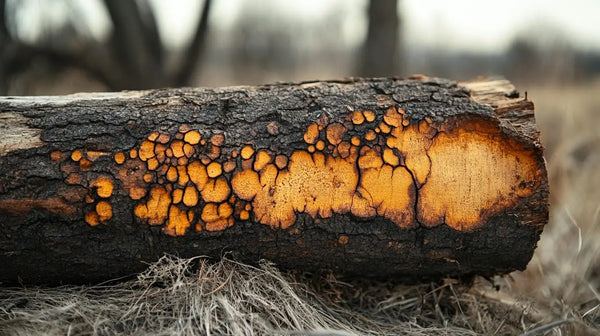
Free firewood can pose several health and safety risks:
-
Pests and Diseases: Unprocessed wood may harbor insects, fungi, or diseases that you inadvertently bring into your home.
-
Chemical Contamination: Wood from unknown sources might have been treated with chemicals or pesticides, which can release toxic fumes when burned.
-
Physical Hazards: Free wood might contain hidden nails, staples, or other metal objects that can damage your tools or cause injury during processing.
-
Allergies and Respiratory Issues: Certain types of wood or mold spores can trigger allergies or respiratory problems in sensitive individuals.
These risks not only jeopardize your health but can also lead to medical expenses or costly repairs to your home or heating appliance.
5. Environmental Considerations

While burning wood is often considered a carbon-neutral heating method, the environmental impact of sourcing free firewood can be significant:
-
Deforestation: Removing fallen trees or deadwood from forests can disrupt local ecosystems and remove important habitats for wildlife.
-
Transportation Emissions: Driving around to collect free wood increases your carbon footprint.
-
Inefficient Burning: Poorly seasoned or inappropriate wood types can lead to incomplete combustion, releasing more pollutants into the atmosphere.
For those concerned about their environmental impact, it's worth considering sustainably sourced, kiln-dried logs as a more eco-friendly alternative.
The Dangers of Burning Certain Types of Free Firewood

Not all wood is safe or suitable for burning. Here's a list of materials you should never use as firewood, even if they're freely available:
-
Green Wood: Freshly cut wood contains high moisture content, leading to poor combustion and increased creosote buildup in your chimney.
-
Oversized Logs: Large pieces of wood that don't fit properly in your stove or fireplace can lead to incomplete burning and potential hazards.
-
Non-Local Wood: Transporting wood over long distances can spread pests and diseases to new areas.
-
Softwoods: While they can be used as kindling, softwoods burn quickly and produce less heat than hardwoods.
-
Driftwood: The salt content in driftwood can corrode your stove or chimney and release toxic chemicals when burned.
-
Poisonous Plants: Never burn wood from toxic plants like oleander, as they can release harmful fumes.
-
Endangered Species: It's illegal and unethical to burn wood from protected tree species.
-
Treated or Painted Wood: These can release toxic chemicals when burned.
-
Moldy or Rotten Wood: This can release spores and unpleasant odors into your home.
For more information on choosing the right wood for your fireplace or wood stove, check out our guide on choosing the right logs for wood burners.
The Value of Quality Firewood
Given the hidden costs and potential risks associated with free firewood, it's worth considering the benefits of purchasing high-quality, properly seasoned or kiln-dried logs:
-
Consistency: You know exactly what you're getting in terms of wood type, size, and moisture content.
-
Efficiency: Properly dried wood burns hotter and cleaner, providing more heat per log and reducing the frequency of refueling.
-
Convenience: Save time and effort by having ready-to-burn logs delivered directly to your door.
-
Safety: Reputable suppliers ensure their wood is free from contaminants, pests, and hidden hazards.
-
Environmental Responsibility: Many suppliers offer sustainably sourced wood, helping you reduce your environmental impact.
For those interested in learning more about the benefits of kiln-dried wood, we have an informative article on the advantages of kiln-dried wood for your fireplace.
Making an Informed Decision
While the idea of free firewood can be appealing, it's essential to consider all the factors we've discussed before deciding whether it's truly worth it. Here are some questions to ask yourself:
- Do you have the time, tools, and physical ability to process free firewood properly?
- Can you safely store wood for extended periods to allow for proper seasoning?
- Are you confident in your ability to identify safe, suitable wood types for burning?
- How much do you value your time, and could it be better spent on other activities?
- What's the potential impact on your health, home, and the environment?
By carefully considering these questions, you can make an informed decision about whether sourcing free firewood is the right choice for you.
Alternatives to Free Firewood
If you've decided that the risks and hidden costs of free firewood outweigh the benefits, there are several alternatives to consider:
-
Kiln-Dried Logs: These logs are dried in a kiln to achieve optimal moisture content, providing efficient and clean burning. Check out our selection of high-quality kiln-dried logs for a convenient and reliable option.
-
Sustainably Sourced Firewood: Look for suppliers who responsibly harvest their wood from managed forests. This ensures you're getting quality firewood while supporting sustainable practices.
-
Wood Briquettes: Made from compressed sawdust and wood chips, these offer a consistent and efficient burn. They're often more compact and easier to store than traditional logs.
-
Heat Logs: Similar to wood briquettes, heat logs are made from compressed wood fibers and offer a long, steady burn.
-
Eco-Friendly Firelighters: If you're looking for an easy way to start your fire, consider our range of eco-friendly firelighters as an alternative to potentially contaminated free wood kindling.
Conclusion: The True Value of Quality Firewood
While the allure of free firewood can be strong, especially in these cost-conscious times, it's crucial to consider the hidden expenses, potential risks, and environmental impact associated with sourcing and burning free wood. When you factor in the time, effort, equipment costs, and potential health and safety hazards, "free" firewood often comes with a higher price tag than you might expect.
Investing in high-quality, properly seasoned or kiln-dried logs from a reputable supplier can offer numerous benefits:
- Consistent heat output
- Cleaner burning with less smoke and creosote buildup
- Reduced risk of pests, diseases, and contaminants
- Greater convenience and time savings
- Peace of mind knowing you're using safe, suitable firewood
Remember, the goal of using firewood is not just to save money, but to create a warm, comfortable, and safe environment in your home. By choosing quality firewood, you're investing in your comfort, your home's safety, and potentially even your health.
For those interested in learning more about the benefits of quality firewood and how to make the most of your wood-burning experience, we invite you to explore our Burning Questions blog. Here, you'll find a wealth of information on topics ranging from the advantages of kiln-dried wood for outdoor firepits to tips for storing kiln-dried logs.
In the end, the choice between free firewood and purchased quality logs is a personal one, based on your individual circumstances, values, and priorities. By understanding the true costs involved, you can make an informed decision that best suits your needs, ensuring a warm, efficient, and safe wood-burning experience throughout the UK's chilly seasons.


